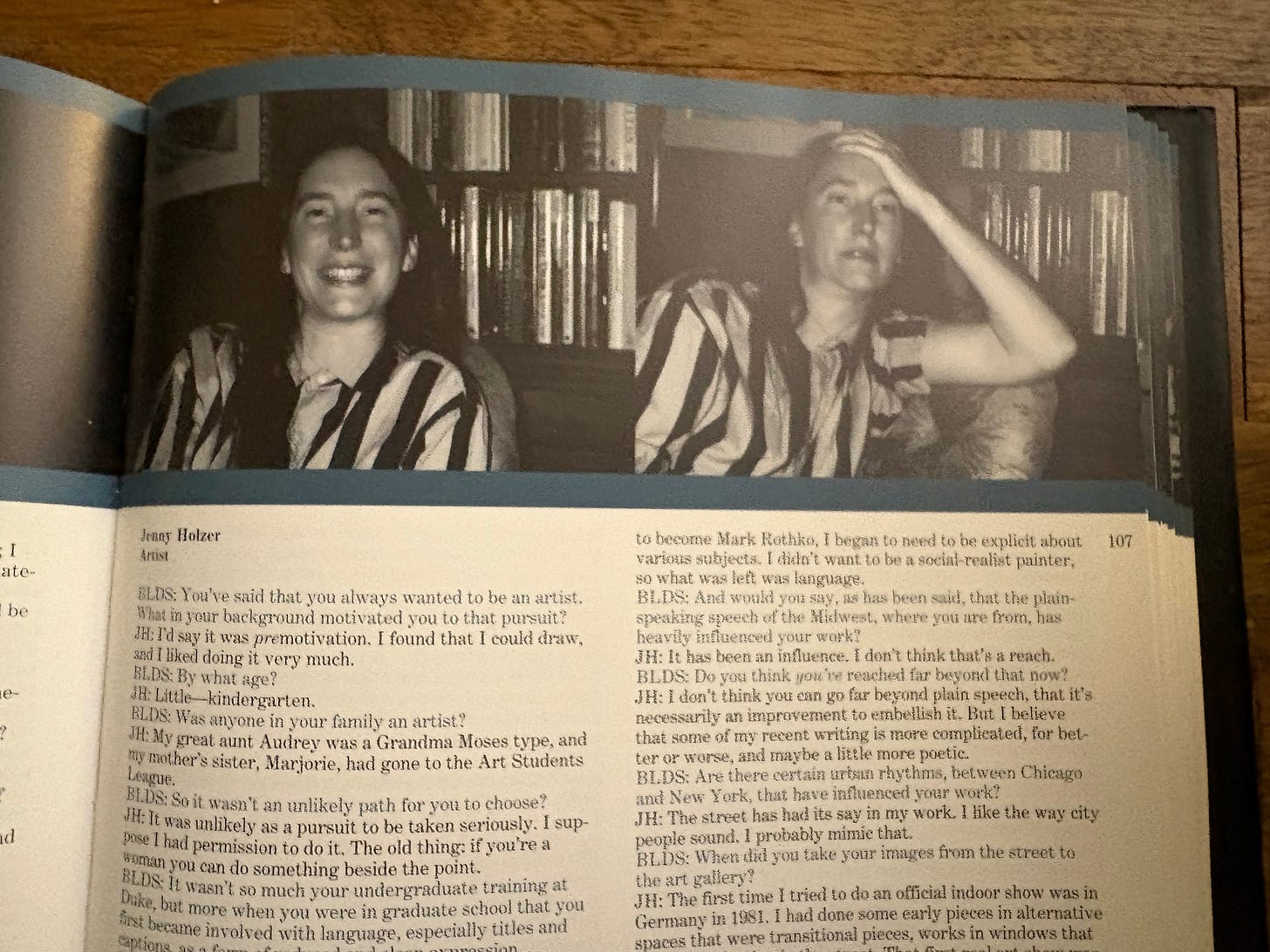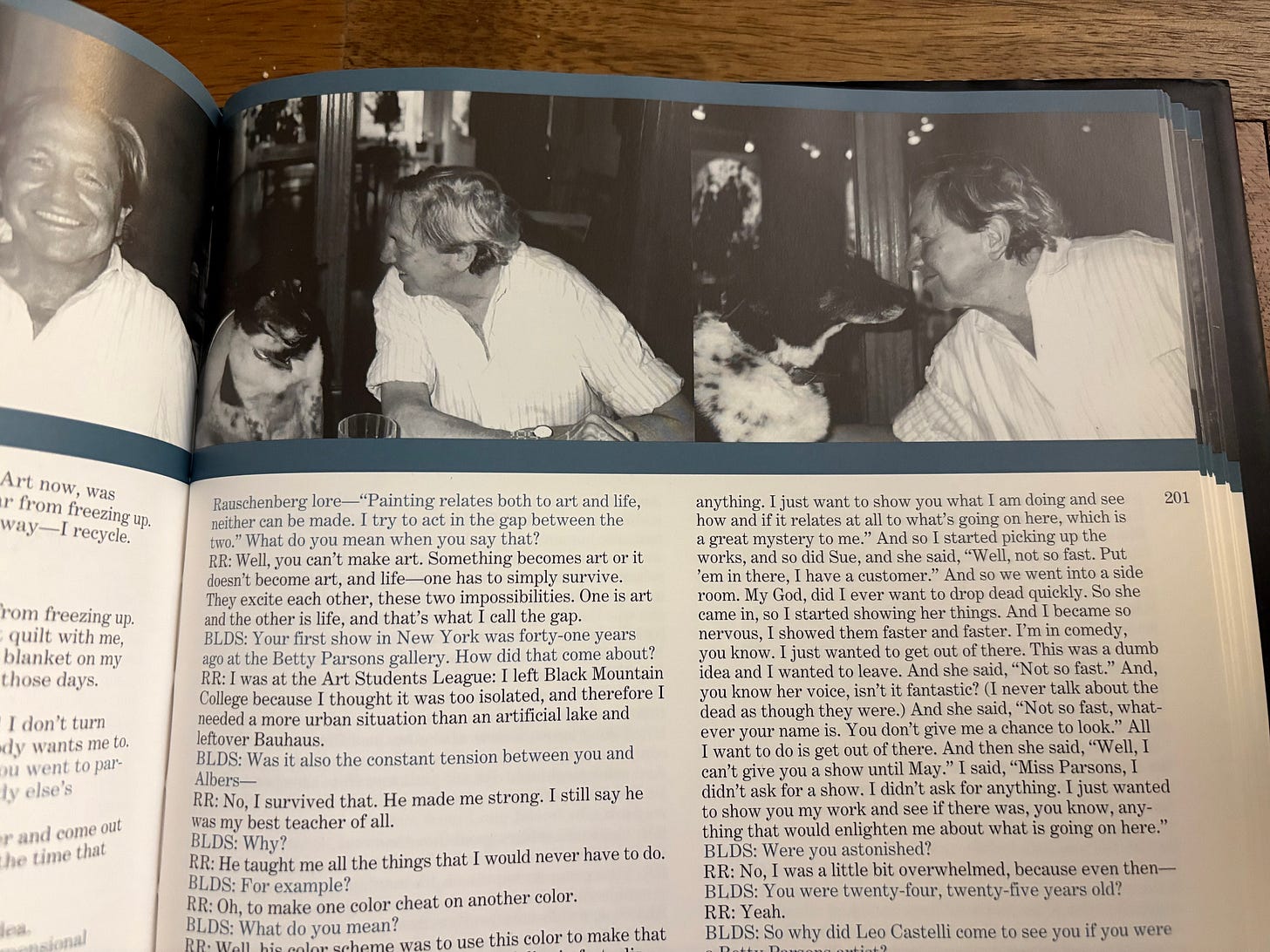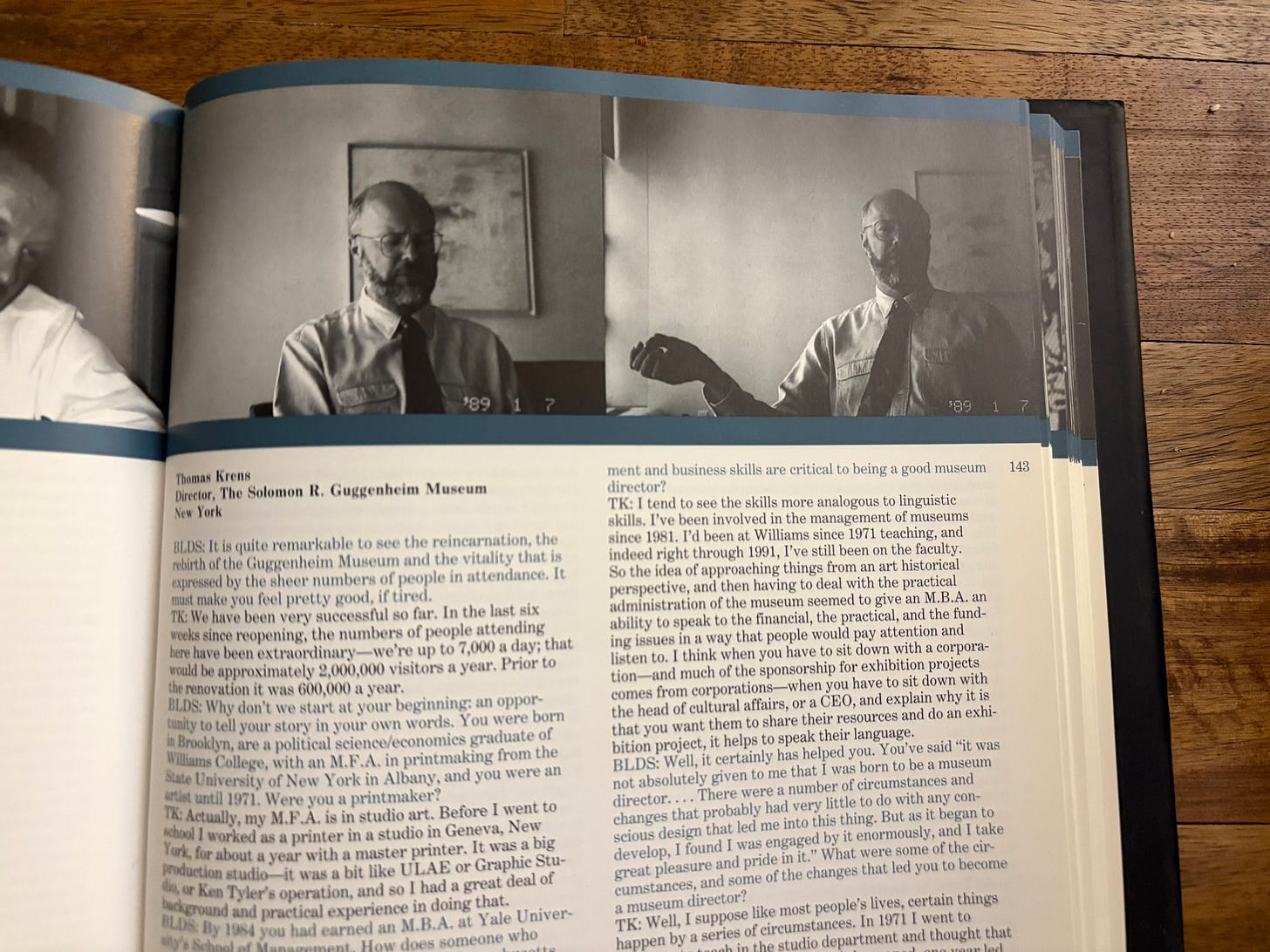Book Review: "Inside the Art World: Conversations with Barbaralee Diamonstein" by Barbaralee Diamonstein (1994)
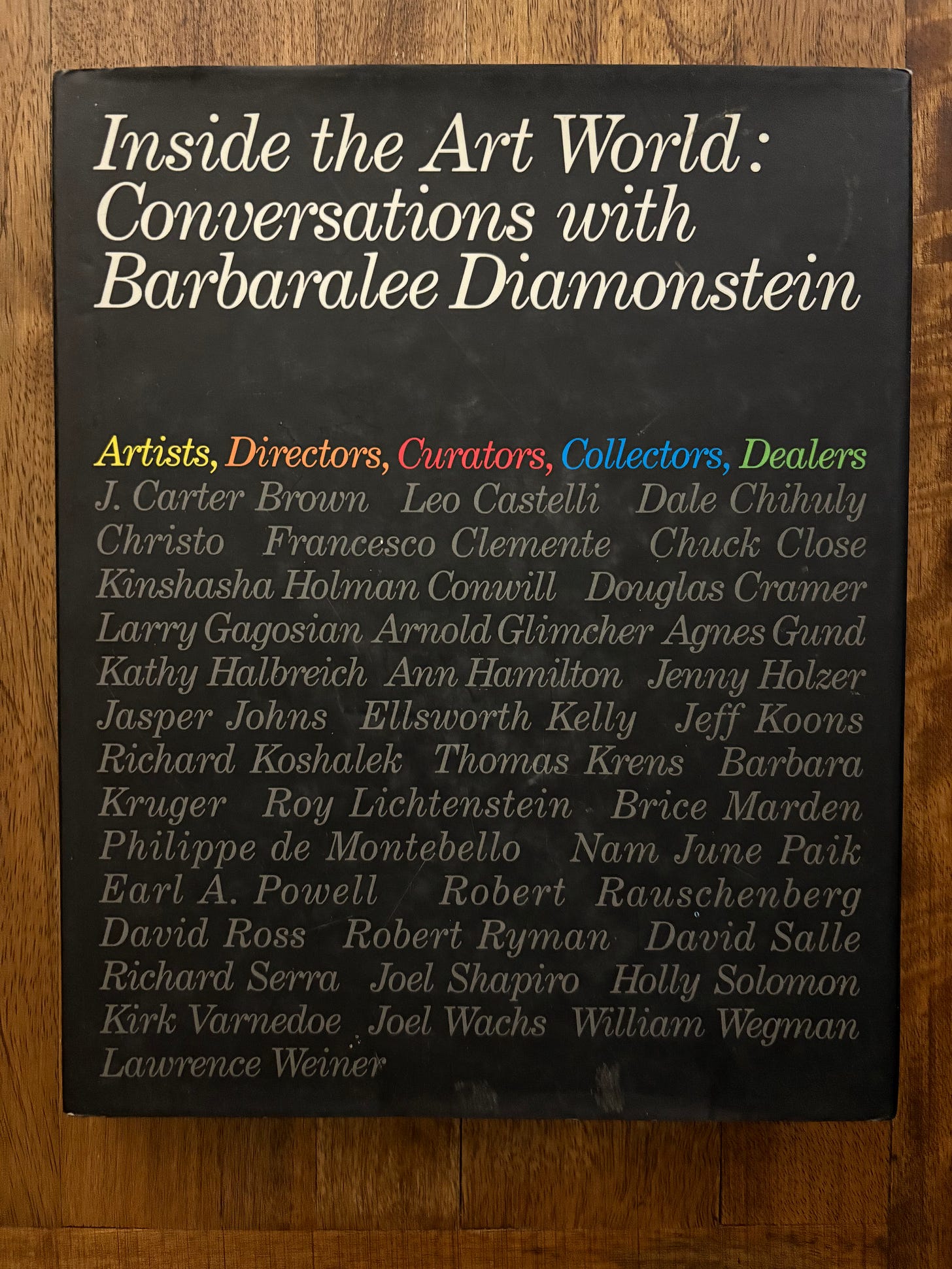
Inside the Art World: Conversations with Barbaralee Diamonstein (1994) is a collection of over 30 interviews with leading figures in the Art World at the end of the 20th Century, from artists and museum directors to collectors and curators. All of the interviews were conducted by Barbaralee Diamonstein-Spielvogel (American, b. 1932), an art historian, historic preservationist, and television producer with over five decades of experience in the cultural sector.
Having been published nearly at the mid-point of the 1990s, Inside the Art World is a thoroughly rigorous assessment of a plurality of trends that occurred towards the end of the century, including: the growing sense for American museums to enlarge their gallery spaces to exhibit more works and to increase or revamp public programming opportunities; multiculturalism and the need to expand representation in the arts; the waning of the art market in the post-1980s economic boom; the disjunctures of Modernism and Postmodernism; the Republican Party’s censorship of the arts and rescinding of funds to the National Endowment for the Arts. And, of course, this text is equally an invaluable window into the personal and professional lives of the subjects themselves.
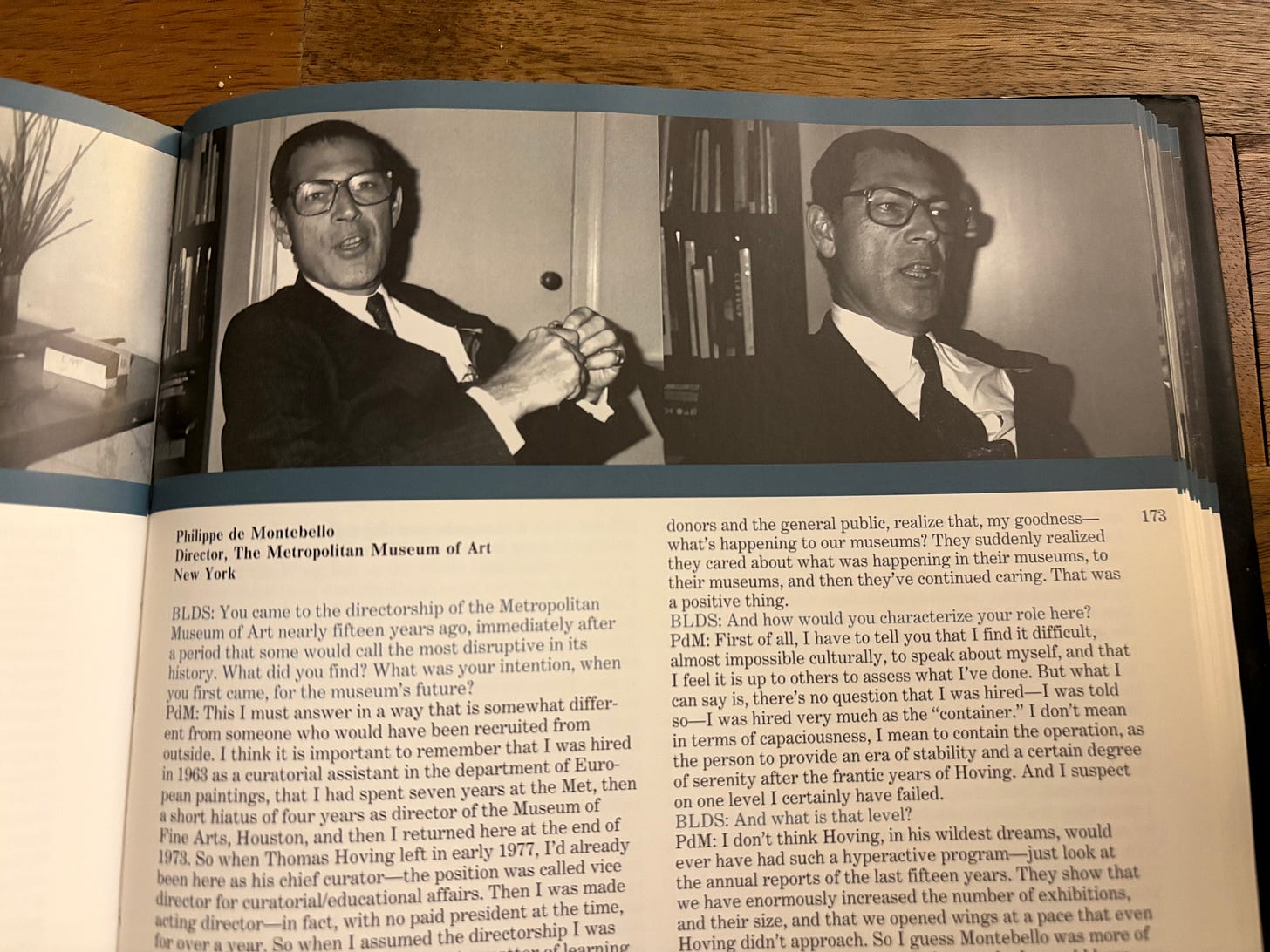
Every chapter follows a fairly consistent structure in which Diamonstein introduces the subject, inquires about their background, when and how they became involved in the arts, questions pertaining to their profession, views on Modern & Contemporary Art’s status, and their future goals. Yet, there is more than meets the eye from that brief summation of the chapters’ organization as Diamonstein’s probing questions reveal a potent blend of academic scrutiny, journalistic investigation, and collegial sincerity. Her respect for each subject is evident in the carefulness with which she asks questions - neither overstepping boundaries and making the subject uncomfortable nor settling for open-ended ambiguity that fails to reveal or explain any ideas expressed forth. Subsequently, these have yielded fascinating discourses that encompass debates on aesthetics, art’s emotional capacities to enrich one’s life, and forward-thinking perspectives on prescriptive methods for the arts to create a more just and equitable society.
Accompanying black-and-white photographs of the respective subjects taken as the interviews were conducted showcase the level of ease and engagement of each participant in the confines of their homes, offices, or studios: glass artist Dale Chihuly’s impromptu tour of his Seattle glassworks studio mid-conversation; multidisciplinary artist Robert Rauschenberg’s jovial demeanor while recounting his career beginnings; or Metropolitan Museum of Art Director Philippe de Montebello’s professorial presentation style as he delineates the merits of the museum’s growth and improvement since the start of his tenure in 1977.
With 36 interview subjects, the range of topics and viewpoints are rounded out exceptionally well, to highlight a few: Robert Ryman’s clear distinctions between his works being paintings and not “pictures”; museum director David Ross’s open-mindedness on demonstrating the diversity of what constitutes American art at the Whitney Museum; sculptor Richard Serra’s frustrations with architects’ interventions in producing sculptural elements to the detriment of professional sculptors. Diamonstein states in her introduction that a few additional subjects were approached for participation, but these individuals declined mainly for one of two reasons: conflicting schedules and the potential redundancy of viewpoints that are already widely documented among the other interviewees.
Since this book is steeped in the contemporaneity of the 1990s through its first-person writing style, some may question whether or not this book is of any reading value in 2025. Though aspects of the text may be dated (Ex.: The Guggenheim’s former SoHo location that later closed in 2002), it ultimately amounts to a crucial primary source that paints a vivid picture of an arguably murky period in more recent Art History - the 1990s. Inside the Art World is a privilege in that it can expand one’s knowledge of groundbreaking figures at the start, middle, and end of their careers - Larry Gagosian’s then-rising stature as an influential gallerist and art dealer; the anticipatory enthusiasm of Christo and Jean-Claude’s planning for their environmental installation Gates at New York’s Central Park (completed in 2005); or curator Kirk Varnedoe’s visionary aims for The Museum of Modern Art to expand its physical parameters for the sake of increasing greater accessibility to artworks previously stored away from the public (a noble goal that has thus far been addressed in 2004 and 2019 since Varnedoe’s passing in 2003). All of the interviews are quite lengthy with each page featuring a double-column spread of text that totals to over 250 pages - a worthy sign of the richness and caliber of both Diamonstein’s interview style and the quality of the interviewees’ responses.




